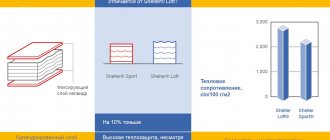LED screens are the most common type of TV today. Buyers willingly choose devices built using LED technology. Liquid crystals are placed in the matrices of smartphones, laptops and full-size monitors, as well as tablets and TVs.
Today everyone uses LED LCD screens, but not everyone can answer what an LED TV is. However, there is nothing complicated about such a question. This article will tell you exactly what the features and advantages of LED TVs are.
Ice TV what is it
Although the spelling of LED is similar to OLED, it means a completely different technology.
Liquid crystal LED TV, what does it mean, is a device using a different backlight system compared to conventional LCD models. And if OLED (Organic Light-Emitting Diode) means that the screen consists of organic light-emitting diodes, then LED (Light Emitting Diode) is the use of diodes to illuminate the matrix of a liquid crystal television receiver. This was done more from a marketing point of view. In fact, it was not a new screen technology, just a different type of backlight. But this name for televisions has been preserved and is used today.
If conventional LCD TVs use a cold cathode lamp, the same fluorescent (fluorescent) lamps (Cold Cathode Fluorescent Lamps, CCFL), then LCD LEDs use light-emitting diodes. As you know, LCD screens on TVs consist of cells (pixels) with liquid crystals and, depending on the position of the crystal in the cell, transmits light or not. This creates a glow on the screen.
The quality of the LCD matrix determines such parameters as static contrast, black level, viewing angles, refresh rate, response time. There are such technologies for producing liquid crystal matrices for TVs: TN, IPS (S-IPS, IPS-Pro, P-IPS, AH-IPS), VA/MVA/PVA, PLS.
Parameters such as brightness, color rendering, color gamut, and dynamic contrast depend on the backlight. Although it is more correct to consider the matrix + backlight system in the TV and measure the parameters for it.
Manufacturers claim that the use of LED backlighting can increase:
- brightness,
- contrast,
- image clarity,
- color scheme.
The energy consumption of LED TVs is also reduced by about 40%. Also, ice TVs do not use mercury, which is used in fluorescent lamps, which affects the environment.
Indeed, modern ultra-bright LEDs can provide high brightness of the display image.
The contrast increases and the concept of dynamic contrast is introduced, when the brightness of the LEDs is adjusted locally for different areas of the screen, and due to this the dynamic contrast indicator increases. At the same time, the level of static contrast of the TV remains the same, it depends on the display matrix.
The black level is also improved by adjusting the glow of the diodes while watching a video. In a dark scene, the backlight level decreases and the screen becomes darker, and hence the black level improves.
But as for increasing the color gamut of the TV, we need to consider everything in more detail.
OLED TVs: brightness and color at their best
TVs with OLED screens have already reached stores, and developers have rushed to release new models with concave displays. Last year, LG planned to introduce a 55-inch OLED TV to the market, but it only went on sale this summer. In Russia, model 55EM9600 and its improved analogue 55EM9700 will cost the buyer 500,000 rubles. In addition, the device is sold in Europe, the USA and some other countries.
Advantages of OLED TVs: it is not a type of backlight, but a different technology
- accurate color reproduction
- greater brightness margin compared to other technologies
- high contrast compared to LCD models (another imaging technology).
- the absence of an LCD matrix and LED backlight - their place was taken by a matrix made of light-emitting organic diodes.
Samsung and LG independently developed OLED TVs with concave screens (Curved OLED). This design is designed to minimize distortion at the edges of the image and increase detail. New items are still available in limited quantities in South Korea, the USA and some European countries. The 55-inch model Samsung KN55S9C is priced by the manufacturer at $9,000 (300,000 rubles).
Of particular interest is also Multi-View technology, implemented in many models of OLED TVs with both flat and concave screens. Due to their extremely fast response time, such devices allow you to simultaneously show two or four programs in high definition (Full HD) or two different films in 3D format. Shutter glasses are used to separate the image. Each viewer can use the controls located on the glasses to select an individual program for viewing. At the same time, thanks to the built-in headphones, playback of the soundtrack corresponding to the film is ensured.
White or composite LEDs
Technologically, the backlight of the display in an LCD TV is provided by LEDs. For this purpose, white diodes are used, the light from which falls on light filters and produces blue, green and red colors. This type is called WLED.
To improve the color gamut, they first began to use three types of LEDs as backlight: red, green, blue. This technology is called RGB LED.
But using such technologies it was not possible to obtain the required spectrum of light. And the color gamut was not sufficient for use in UHD TVs. To solve this problem, new types of LEDs in TVs were invented.
Composite LEDs combine blue and green into one and coat it with a red phosphor (GB-R), or alternatively combine red and blue and coat it with a green phosphor (RB-G).
Detailed information about the differences in WLED, RGB and GB-R LED backlighting.
Additional features
DVB-T. Digital television standard. Allows, in addition to analogue cable and terrestrial television, to connect satellite television.
Volumetric 3D image . Using this option, you can view 3D images with active or passive 3D. It is necessary to take care of special glasses.
Smart TV . Allows you to connect and use the Internet. The connection occurs via the WiFi module. Connection via network cable is possible. Some TVs allow you to build in an additional router. With Smart TV you can play videos from the Internet, play games, listen to music, and search for information.
Quantum dots in LED TV
A completely different technology for changing the WLED backlight was proposed by Nanosys.
Quantum dots in a TV replace some of the diodes, in this case red and green. All that remains is the blue LED, which generates a stream of light both to excite the quantum dots and to operate the blue sub-pixels on the screen. And the flow of light onto the red and green sub-pixels is formed by quantum dots.
Ice lighting methods
To improve the image quality on the TV screen, local dimming technology has appeared, according to which LEDs are controlled by groups of several diodes. The local dimming system has several disadvantages:
- Poor color uniformity in the image, that is, bright and dark spots are noticeable in areas where the backlight is brightly turned on and off.
- Colored halos appear at contrasting transitions.
- Image detail disappears in dark areas.
These shortcomings are difficult to determine from a regular video image on a TV screen, so today the local dimming method is widely used in models with LED backlighting.
You can also divide LED TVs according to the way the LEDs are arranged: Direct and Edge.
Direct is when the diodes are located evenly behind the screen, in the form of a matrix.
Edge is when they are located around the perimeter of the screen together with the diffuser panel. With such an arrangement, it is impossible to make effective local dimming using the local dimming method.
With the Direct method, you can get a more uniform backlight compared to the Edge method, but the thickness of the TV and power consumption will increase due to the increase in the number of LEDs. Ultra-thin TVs (thickness can be less than 3 centimeters) can only be achieved by using the Edge diode arrangement.
As of 2015, LED TVs have won the competition over plasma TVs, and OLED panels cannot yet match the cost of LED models. Therefore, in 2015, LED devices occupy all the positions in the TV lineup of all global manufacturers. Only a few manufacturers have decided to release OLED TVs, with LG especially taking the lead here. So when buying a TV this year, you will probably buy an LED model.
How is it different from other technologies?
To accurately highlight the advantageous qualities and features of LED, it is worth comparing it with other methods of creating moving pictures.
LCD
It stands for “liquid-crystal display” and means that light sources are also used to illuminate the screen from the back side, but they use ordinary fluorescent lamps (fluorescent). The service life of such lamps is relatively short, and the brightness decreases greatly over time. In addition, their production uses very harmful chemicals - mercury compounds.
The brightness of conventional LCD displays is low. The fact is that light on its way from the lamps to the viewer passes through several layers of diffusers and rotating cells of liquid crystals. At the same time, clear black color is not displayed because some of the light still “leaks through” the closed crystals. The dimensions of the lamps are quite large, so such screens cannot be ultra-thin. But LED is a direct successor to LCD, so there are not many fundamental differences.
Plasma
Plasma TVs, on the other hand, use a completely different method of creating images. Unlike LEDs, they do not require artificial backlighting at all - each pixel on the screen emits light itself. Thanks to this, the brightness of the images of plasma panels is unrivaled, and they are often installed outdoors. However, energy consumption is also high when compared with other competitors.
Cells tend to burn out quickly, that is, lose brightness during constant operation. And the constant presence of the same TV channel icon in the corner of the screen will burn out the involved cells, which will be noticeable when switching the channel.
OLED
Means "organic LED". The technology is based on organic light-emitting diodes. In this case, the word “organic” does not mean LEDs made from living tissue, but semiconductor chemical compounds – polymers containing carbon.
Compared to LED TVs, such TVs are brighter, more economical, do not require backlighting, the image is not distorted at any angle, and the contrast is considered infinite. However, at the moment, many problems remain - they are very sensitive to air humidity, blue LEDs lose their luminosity quite quickly (within a couple of years), the service life of the screen directly depends on the brightness. The price also remains high.
QLED
Not long ago, Samsung announced QLED technology. This abbreviation stands for “quantum LED” (“quantum light-emitting diodes”). Each subpixel on the screen is not a color filter (one of three colors), but a full-fledged blue LED, and the red and green colors are generated by so-called “quantum dots” - areas on the screen that, when light falls on them, begin to emit light. Blue light falls on them from the back, and they themselves emit red and green colors towards the viewer.
Such screens are still quite expensive and rare, but they have a lot of advantages, including a long service life, minimal energy consumption, low cost and low cost of switching to a new type of equipment. They also change shape very easily, making them the best candidates for the display surface of flexible tablets.
Plasma TVs
Plasma TVs consist of a series of cones filled with gas. If you apply voltage to it, plasma is formed. A phosphor is applied to the walls of the cones, which converts the ultraviolet glow of the plasma into radiation of a certain color - red, blue or green.
Interesting! A plasma panel is a matrix of gas-filled cells, each of which is coated with a special phosphor, and their glow occurs due to the formation of plasma.
As a result, any of the possible shades is formed. A distinctive feature of plasma TVs is their high energy consumption and heavy weight.
Due to the technology, the problem of partial or complete burnout of pixels arises when a static picture is displayed for a long time - the phosphor on the bulbs burns out. Plasma TVs were at the origins of thin TVs. They are characterized by a fast matrix response and high contrast, so you get a bright and rich image.
Currently, the popularity of plasma panels is declining; they have been replaced by LCD and LED TVs.
- deep and rich colors;
- low black level, such TVs produce black color as close to ideal as possible;
- high contrast;
- almost complete absence of matrix response time - this means that plasma is excellent for dynamic images, i.e. for films;
- wide viewing angles (170 degrees);
- high price;
- It is undesirable to include a static image, photographs, for example, for a long time. As we already mentioned, this harms the health of the pixels.
Main characteristics
Screen resolution . Determined by the number of pixels that form the image in width and height. The higher this parameter, the clearer the image and the more different details you can see on the screen.
LED-TVs mainly have Full HD (1980x1920 pixels) and HD Ready (1366x768 pixels) resolution. These are the most popular video formats at the moment. Some premium models have 4K UHD resolution (3840x2160 pixels).
Almost all 4K UHD TVs support HDR. This is an extended dynamic range format that allows you to depict a picture as close to reality as possible.
Screen covering . There are matte and glossy. With a matte finish, the image is softer. Viewing angle is limited. There is no glare when exposed to sunlight. If the coating is glossy, then the picture on the screen is very bright and contrasting. Visibility becomes poorer in bright sunlight.
Functional connectors . Usually there are standard ones: HDMI output, Ethernet output and USB connector for watching video from a flash drive or hard drive. The latest models have a D-sub video port. It involves connecting a computer to a TV.
Sweep frequency . An indicator of how many frames of a film are shown per second. It is measured in Hertz and can reach values up to 960 Hz. For 3D TVs, the frequency can be even higher. The recommended range of values so that the image does not blur and pictures do not overlap one another is 100−200 Hz.
LCD TV
The phrase LCD display stands for “Liquid Crystal Display”, the synonym is LCD display. It consists of an LCD matrix, which, in turn, consists of two plates. Between them are liquid crystals. In addition to the matrix, the display design includes a backlight. Classic LCD TVs and monitors use CCFL backlighting - these are so-called cold cathode fluorescent lamps.
The backlight lamps are located at the end of the light-scattering layer of the matrix. The principle of operation is that liquid crystals located between two polarized plates change the polarization of light when a voltage is applied to them. The polarized plates between which the crystals are located have mutually perpendicular polarization. This means that light would not pass through these plates if there were no liquid crystals. Thus, by smoothly changing the polarization vector, you can change the intensity of light transmission through the matrix.
To obtain a color image, a color filter is applied to the cell. This is called a subpixel. There are red, green and blue subpixels. A group of subpixels of three colors is called a pixel. This part of the display is called a matrix because it consists of millions of such pixels.
The distinguishing feature of televisions in this group is their significantly lower weight and power consumption than plasma panels. Unfortunately, they have a lower viewing angle and contrast than plasma. The black color in LCD TVs is usually not completely black, but something between dark blue and dark gray tones. The response of the matrix is also lower than that of plasma panels. Manufacturers are using various technological tricks to improve the quality of LCD TVs.
- Relatively low cost;
- Great for displaying photos and other static information;
- Low power consumption;
- Service life up to 75,000 hours.
- High black level (closer to dark gray);
- Low contrast;
- Great response time.
Black level is measured in NT or nits, which is equal to 1 candela per 1 square meter of area. The lower the black level, the blacker the color.
LED TV: advantages and disadvantages
Basically, LED TVs are LCD TVs. But instead of CCFL lamps, they have LEDs in the backlight. Due to this, energy consumption is further reduced. There are several options for LED backlighting:
- The placement of LEDs along the edge, the so-called Edge option. It is no different from CCFL backlighting. High contrast cannot be achieved. LEDs located around the perimeter of the screen shine on the light-diffusing glass, after which the liquid crystals transmit or do not transmit light. The problem is that closed (turned off) crystals still allow some light to pass through. Therefore, it is not possible to achieve depth of black;
- To solve this problem, we developed LED carpet backlighting for displays. This technology is called differently depending on the manufacturer, for example Full HD LED or LED pro. This technology allows for improved illumination uniformity, and individual diodes can dim their brightness to increase contrast and achieve a blacker color than with previous technology.
- acceptable, and in expensive models there is good image contrast;
- good color rendering;
- low weight;
- low power consumption;
- the use of LED backlight eliminates the high-voltage inverter for igniting lamps from the circuit. And it most often failed in CCFL LCD screens;
- LED TVs are thinner than LCD: the thickness of modern models reaches 4 mm.
The only significant drawback is the high cost of LED monitors and TVs, but recently this problem has been solved - there is a tendency for prices to decrease.
Advantages and disadvantages
LED TVs have low power consumption
. New technologies are emerging, so LED TVs are becoming cheaper, and their advantages can be appreciated by many buyers.
Among the positive qualities noted:
- small body thickness. This equipment weighs little, so there are no difficulties with its placement. If desired, the TV is mounted to the wall using a bracket. And thanks to the laconic and universal design, LED devices will look advantageous in any interior;
- high contrast level. In models with Direct LED backlighting, this parameter is configurable;
- low power consumption;
- diversity. In addition to classic models, designer ones are also available: in the form of a photo frame, mirror, with a curved screen;
- long service life. Explained by the resistance of diodes to burnout;
- contrast and clear image. The response time in such panels is reduced, so even dynamic scenes look smooth. As for viewing angles, in this parameter LED devices are close to plasma panels;
- environmentally friendly technology. No mercury is used in the production of television panels.
There are also a number of disadvantages:
- dark and bright spots with activated and deactivated backlight. The fact is that Local Dimming technology controls a group of diodes, so colored halos may be visible in a contrast image;
- high requirements for signal quality. If you play a low-resolution movie on your LED TV, it won't look the best. The image is “stretched”, which reduces detail;
- LED models are 40% more expensive than classic LCD devices.
Now they produce OLED devices, the matrix of which is assembled from organic light-emitting diodes. They are responsible for the formation of the finished image.
OLED TVs are even thinner than their LED counterparts, they have wider viewing angles and improved color rendition. In order for the black color to be a “deep” black, the separate diode simply does not light up. This allows you to increase the contrast significantly.
But OLED TVs are expensive and have a relatively short service life. While this technology is being finalized, it is LED devices that are considered in demand.
Types of LCD and LED TV matrices
Today the popular types are:
- IPS are currently installed mainly in LG TVs of the low and mid-price segment 3-6 series and Philips 4 and 6 series, as well as on Panasonic. With its help, the developers managed to achieve large viewing angles. Its disadvantage is a fairly high black level (approximately 0.16 nits) and a long response time;
- S-PVA, manufactured by Samsung. Installed on Samsung, Panasonic and Sony 7 and 8 series TVs. Features a low black level (from 0.05 to 0.1 nits). Viewing angles are smaller than IPS;
- UV²A - this type is manufactured by Sharp. Installed in top Philips and Sharp models. Their viewing angle is between S-PVA and IPS, and the black level is the lowest and deepest - from 0.02 to 0.06, which is comparable to the black level of plasma panels.
Comparative characteristics of LCD, plasma and LED TVs
For greater clarity, let's compare the distinctive features of each type of TV - LCD, LED, plasma.
- Screen size. Previously, due to the design features, plasma panels had large diagonals; currently, a number of diagonals start from 42″. LCD and LED TVs can be manufactured in any size. For example, mobile phone screens have been manufactured using these technologies for more than 15 years;
- Contrast. In the first place in this category are plasma panels, LED in second, and LCD in third, although for liquid crystal displays the type of matrix plays a big role in the image;
- Depth of black. This value is related to the contrast of the image; plasma technology is also in the lead, and in liquid crystal displays, LED TVs with carpet backlighting and a UV 2 A matrix have the maximum black depth;
Tips for choosing
All types of TVs are good in their own way; to choose a model that suits your needs, you need to decide what is your priority. The comparison above and these five tips from the experts will help you with this:
- If high contrast and deep colors are important to you, a plasma TV is perfect;
- For those whose TV works almost 24 hours a day or for use in public places, such as cafes and bars, an LED TV will be the best choice: they have a long service life and low power consumption;
- If the budget is very limited, but you want a large screen, then it is more profitable to purchase an LCD TV;
- Pay attention to the ability to play multimedia from a USB flash drive - this way you can save on purchasing an additional player;
- Access to the Internet via TV will make it easier for older people to learn new technologies, and will also be useful for those who have small children to play cartoons on Youtube.
Tips for choosing
LED devices have become popular. After all, LED TV - what does it mean? This is high quality, convenient and comfortable to use. The advantage of an LCD TV is LED backlighting; all LED models have it. But sometimes you have to pay extra for design features and additional features. What should you pay attention to when choosing an LED TV model?
First of all, you need to decide which diagonal is best to choose. The stores offer a huge selection of different models from 19 to 58 inches. Sometimes it is not very common to calculate in inches and you have to select the size in centimeters, that is, from 48 to 147 cm. The correct choice of diagonal depends on the size of the room where the TV will be installed.
What are LED TVs
An LED TV is a device that is a TV receiver with a liquid crystal screen. The matrix is equipped with a special backlight from a set of LEDs. Explanation of the abbreviation LED - “Light Emitting Diode”. From a technical point of view, it would be more correct to call such devices liquid crystal with LED backlighting. However, Samsung was the first to launch such a device on the market under the name “LED TV”. Other manufacturers adopted it, so it became common.
LED backlight
Nowadays different types of such devices are produced. They differ in the type of LEDs used and the order of their location in relation to the screen. By lamp color:
- Single-color (White LED). A budget option. It does not have the disadvantages of fluorescent backlighting and creates an image with a similar color gamut, but not as contrasty.
- Multi-colored (basic RGB LED color triad). The color palette is expanded due to the LED brightness control. The number of semitones has been increased. To support this technology you need a powerful GPU. The model will cost more and consume more energy.
- Mixed. Blue LED backlights and a special film with green and red quantum dots. This technology reduces the device's power consumption.
We found out what LED backlighting is on a TV. In addition to the color of the lamps, it differs in their location. There are two options:
- Directly behind the LCD matrix. Direct backlight type Full or Direct LED. These models are cheaper than Edge, but not as thin. With a high level of contrast. They have white and multi-colored LEDs.
- Along the perimeter of the LCD matrix. Edge LED backlight type. LEDs can be located on one (bottom), two (side) or four sides of the screen. Thanks to this, manufacturers produce models less than 1 cm thick in these white LED devices. Budget models made using this technology have a drawback. They show highlights along the edges of the screen. In addition, they have a low contrast level.
Characteristics
There is a huge variety of models from different manufacturers on the market. They differ in price depending on the parameters they have. To make it easier to choose a model based on your budget when purchasing, learn to understand at least the key characteristics that an LED TV has:
- Permission. There are several options: Full HD, HD Ready, Ultra HD. The latter is considered the best.
- Smart function. Thanks to this option, you can access the Internet directly from the device. There are models with and without a built-in router.
- Sweep frequency. Shows how many times the image is updated per unit of time.
- 3D image function. If you plan to watch films in this format, then choose from two display technology options: active and passive. Compare both options in the store and determine which is more comfortable for your eyes.
- Matte or glossy screen. The first one does not have such a large viewing angle, but the second one has glare.
Advantages
An LED TV is nothing more than an LCD screen, but improved. LCDs used to use CCFL cold cathode fluorescent lamps as the light source. They were replaced with LED lighting. This freed liquid crystal devices from their characteristic disadvantages. Thanks to LED technology, TVs have become thinner (especially Edge models). They are environmentally cleaner and more energy efficient, do not contain mercury, and do not require specialized disposal. Advantages:
- more contrast image compared to other technologies;
- maximum screen viewing angles;
- rich and natural colors;
- consumption of a relatively small amount of energy;
- display high definition signals;
- thin body.
What parameters should you pay attention to when purchasing LCD LED TVs?
When choosing LCD LED TVs, you should make your final decision by directly comparing the following characteristics:
-Full HD or HD Ready resolution;
-3D support;
-compatibility with HDR technology;
-screen diagonal;
- ability to connect to the Internet (including via Wi-Fi).
Before purchasing, you must also take into account the fact that behind the successful creation of an extensive multimedia system is an LED TV that has several HDMI ports. They are required for basic connection of DVD players, TV set-top boxes, game consoles and other signal sources.
LCD LED TVs in the price lists of various electronics stores are usually represented by a wide range of devices, where the pricing policy is characterized by a segment from 2095 to 79990 rubles.
On popular electronics websites you can find detailed technical specifications, instructions for using the device, available terms of purchase, warranty, possible delivery or pickup in your city.
LED TVs
There is a huge range of panels from different manufacturers on sale. You can easily choose a small budget device or a huge one with many additional functions and capabilities. Some panels can be used not only for watching movies, but also for playing games on the console. Find out which models from well-known manufacturers are the most popular.
Models from this manufacturer have proven themselves well; they work reliably for a long time. If you are interested in this brand, pay attention to this option:
- Model name: Shivaki STV-48LED15;
- price: 24,000 rubles;
- characteristics: black, screen diagonal - 48 inches (121 cm), refresh rate - 50 Hz, resolution 1920x1080 dpi, video in Full HD format, sound power - 16 W, four digital tuners, 3 HDMI ports, 1 USB connector for viewing multimedia files from external media, has a recording function, child lock option, weight – 11.5 kg;
- pros: fits well into any design, can be placed on a shelf or mounted on a wall, reasonable cost, high-quality image;
- cons: no Smart TV, Wi-Fi, 3D capabilities, surround sound, few functions, poor response to the remote control, inconvenient menu.
This company has a lot of TV options: plasma, LCD, LED. They are distinguished by good quality and affordable prices. You may be interested in the following option, budget but worthy:
- Model name: TCL LED32D2930;
- price: 14500 rub.;
- characteristics: diagonal 32 inches (81.3 cm), resolution 1366x768 Pixels, brightness 240 cd/sq. m, 16:9 format, progressive scan, 60 Hz refresh rate, Smart TV, timers, child lock, teletext, program guide, 2 built-in speakers, stereo sound power 10 W, surround sound, Wi-Fi? connectors – component, 3 HDMI, PC input, coaxial audio output, 1 USB, black;
- pros: cheap, can be hung on the wall or put on display, good picture and sound quality, bright colors;
- Cons: too fragile, cannot be used instead of a monitor.
The company's products include a huge number of LED TVs. Nowadays this one is especially popular:
- Model name: Samsung UE40MU6100UXRU;
- price: 36,000 rub.;
- characteristics: diagonal 40 inches (101.6 cm), Edge LED backlight, 16:9 format, Ultra HD, resolution 3840x2160 pixels, HDR support, Smart TV, voice control, timers, program list, channel name entry, protection from children, Russian menu, program guide, teletext, digital noise reduction, comb filter, image and sound enhancement technologies, decoder with automatic and manual settings, 2 built-in speakers, sound power 20 W, 3 HDMI connectors, 2 USB ports, Wi- Fi, Bluetooth;
- pros: natural colors, stylish design, the remote control is universal and controls all devices connected to the LED TV, connects to a mobile device, excellent picture quality;
- cons: slows down when playing very large files.
All LED TVs from this company are distinguished by high quality, durability and attractive modern design. This option will fit perfectly into a stylish interior:
- model name: Ultra HD (4K) LG 43UH619V;
- price: 32,000 rub.;
- characteristics: white, diagonal 43 inches (109.2 cm), Direct LED backlight, 16:9 format, Ultra HD available, resolution 3849x2160 pixels, progressive scan, anti-glare coating, Smart TV, input of channel names, child lock, menu Russified, teletext, program guide, Plug&Play function, dynamic scene index, digital noise reduction, comb filter, 2 built-in speakers, sound power 10 W, surround sound, 3 HDMI ports, 1 USB connector, Wi-Fi;
- pros: good image detail, detailed clear instructions, loud and clear sound, a lot of useful functions and modes;
- disadvantages: there is distortion of the picture when viewed from different angles, few applications, you often need to adjust the screen format to different types of files, inconvenient mounting on the wall.
Among the wide range of this manufacturer there are a lot of inexpensive and high-quality models. Pay attention to this option:
- model name: Mystery MTV-4030LT2;
- price: 18,000 rub.;
- characteristics: diagonal 40 inches (101.6 cm), Direct LED backlight, 16:9 format, Full HD, resolution 1920x1080 pixels, progressive scan, refresh rate 60 Hz, timers, clock, input of channel names, program list, protection against children, freeze frame, Russian menu, blue screen, shutdown when there is no signal, teletext, program guide, built-in radio, digital noise reduction, 2 tuners, 2 built-in speakers, power 20 W, 3 HDMI connectors, 1 USB port;
- pros: affordable price, convenient menu;
- cons: not very saturated colors, insensitive remote control, no Wi-Fi, poor sound.
TOP 5 best LED TVs
Modern manufacturing companies are constantly updating their range of LED TVs, improving the functionality and appearance of the devices. Taking into account the most important technical characteristics and additional options, we can make a list of the best flagship LED TVs that guarantee high image quality.
Samsung UE49NU7300U
The model is equipped with a curved screen, which provides the most colorful and realistic picture with a full immersive effect. The TV runs on the Tizen operating system, developed by the company's own specialists. HDR 10 is supported and the ability to stop video and then record it to removable media.
| Diagonal | 48.5 inches |
| Permission | 3840x2160 4K |
| Matrix frequency | 100 Hz |
| Power | 20 W |
Add. functions and features: the ability to mount on a wall, support for Airplay and DLNA, the presence of a Time Shift option.
Cost: 34990 rub.
LG 43LM6500
A model with a bright display, good color rendering and a glossy finish. Image enhancement technology is provided using an enhanced 4-core graphics processor.
| Diagonal | 43 inches |
| Permission | 1920x108 Full HD |
| Matrix frequency | 50 Hz |
| Power | 20 W |
Add. functions and features: control via a universal remote control, work in the smart home ecosystem, voice control.
Cost: 25990 rub.
Thomson T32RTL5130
One of the most popular LED TV models due to its excellent price-quality ratio. Glossy monitor finish, good image clarity and contrast.
| Diagonal | 32 inches |
| Permission | 1366x768 HD |
| Matrix frequency | 50 Hz |
| Power | 10 W |
Add. functions and features: support for stereo sound and DVB broadcasting standards, teletext option available.
Cost: 12990 rub.
Philips 50PUT6023
Ultra-thin TV with a glossy display, which is equipped with a special anti-glare coating. The Pixel Plus Ultra HD processor is responsible for improving image quality.
| Diagonal | 50 inches |
| Permission | 3840x2160 4K |
| Matrix frequency | 50 Hz |
| Power | 16 W |
Add. functions and features: the presence of three HDMI connectors with specification 2.0, there is no support for Smart TV and Wi-Fi functions.
Cost: 26990 rub.
Sony KD-65XG9505
Slim LED TV with a glossy monitor finish. The TFT IPS graphics matrix is responsible for the improved picture quality, which provides uniform black color and increased clarity.
| Diagonal | 64.5 inches |
| Permission | 3840x2160 4K |
| Matrix frequency | 50 Hz |
| Power | 20 W |
Add. functions and features: 16 GB built-in memory and voice control.
Cost: 180,000 rub.
How to choose an LED TV
Buying equipment for your home is a very important moment that needs to be approached with the utmost seriousness. It is important to go to stores with a good reputation that guarantee the quality of their products. You can either buy an LED TV or order it from an online store with delivery from Moscow or St. Petersburg to your home by mail. It is profitable to buy equipment before the holidays; during such periods, stores often have sales and promotions and offer excellent discounts. Tips for choosing an LED TV:
- Screen diagonal. This is one of the most important indicators. Many people believe that the larger the screen, the better. The optimal size should be calculated as follows: divide the estimated distance from the viewing position to the LED TV by three. The diagonal should be equal to the number you get.
- Screen resolution. The best for today, but also the most expensive, will be an Ultra HD LED TV.
- Image quality. This option should be selected based on personal preferences. In stores, as a rule, there are a lot of working TVs broadcasting the same file. Compare which one you like better.
- Screen covering. Glossy is more contrasty and brighter. However, it is not suitable for a room with a lot of sun, it will glare. Matte makes the image less clear, but is not shiny at all.
- Format. The most popular at the moment is 16:9. Suitable for watching both digital and satellite television. The second 4:3 format option is suitable for cable channels.
- Manufacturer. Buy only products from companies that have been on the market for a long time and have proven themselves well. Pay attention to reviews online.
- Settings. The more options you can adjust, the better. On some budget models it is impossible to even change the brightness of the image.
- Additional functions. Modern LED TVs are equipped with many options that are not critical: voice control, wi-fi, built-in router. Assess your budget and decide which bells and whistles you need.
- A set of functional connectors. It is better to purchase a TV that has HDMI and USB ports for connecting other devices. Check whether the connectors are conveniently located and whether access to them will be difficult.
How to choose an LED panel
The unit of measurement for display refresh rate is Hertz.
To figure out which LED TV model is best to buy, you need to look at the technical specifications:
- permission. Mid-range devices have Full HD resolution (1920 x 1080 pixels). For a small diagonal, up to 32 inches, you can choose HD Ready. It is worth considering here that analogue broadcasting is gradually disappearing. It is being replaced by “digital”, so experts advise looking towards higher resolution;
- sizes. If you plan to put the TV on a cabinet, then you don’t have to look at the weight and dimensions. Thin and light models are relevant if the panel will be attached to a wall or ceiling;
- display refresh rate. The unit of measurement for this parameter is Hertz. Video scan rate for digital broadcasting is 50 Hz, and this is a normal value for displaying dynamic scenes. But the content is developing and such frequency is becoming insufficient. Sony and Samsung companies solved the problem by adding intermediate frames, which made it possible to increase the scan rate to 100 Hz. The screen refresh rate in some models reaches up to 200 Hz;
- display covering. The matte finish neutralizes glare, but slightly reduces image clarity. The glossy screen, in turn, is contrasty, bright and saturated, but is not resistant to glare, which reduces the comfort when watching TV on a sunny day;
- interfaces. In the 21st century, there are so many gadgets. And many of them can be connected to a TV, which usually requires just a few HDMI and USB ports. To improve sound quality, an audio system is connected to the panel, but this requires a separate audio output;
- Smart TV. The smart function is the ability of the panel to access the Internet. This opens up access to a large amount of media content: films, TV series, music, photographs, social networks, programs, games and much more. To connect, use a Wi-Fi module or a wired connection via a LAN connector. The operating system built into the TV is responsible for the functionality of this functionality. Each manufacturer has its own: LG – webOS, Samsung – Tizen. OS is no less popular
When choosing an LED TV, we start from the purpose of the purchase. For example, if you don’t need the Internet, then there is no point in paying for this function. And if the panel is taken into the kitchen, “just so that someone will chat,” then the frequency along with the resolution can be safely reduced, which will reduce the price.
What does LED TV mean? It is an LCD panel with LED backlighting. This technique shows a brighter, more contrasting and detailed picture compared to outdated LCDs. Knowing the basic characteristics, you can easily choose a device to suit your needs. Fortunately, many online stores make search filters for this purpose.
Features and benefits of LED TVs
When choosing the right TV model, many consumers are faced with new terms and modern technologies. For example, not everyone knows what a TV with LED technology is and what principle its operation is based on. Despite this, today this type of flat devices is most popular among buyers, so they are considered a completely familiar attribute in the home. Before you make your final choice, you should still figure out what the abbreviation LED means, how such TVs differ, and what advantages they have over other types of TV.
Definition and Features
Literally translated, LED is a light-emitting diode. However, it is advisable to believe that it cannot serve as a complete definition. In fact, a modern LED TV is a representative of the long-known liquid crystal panels. The main component is an LCD matrix with many luminous dots - pixels. But if the usual LCD devices used fluorescent lamps as backlight, then the devices in question use LEDs, that is, TVs with such backlighting are more advanced versions of LCD models.
Samsung developers were the first to use this technology. As a marketing ploy, the new TVs were given the name LED TV, which is still used today.
LEDs here act as light sources, and are not the actual unit of the image being formed. Therefore, it would be more correct to call such panels LCD TV with modern LED backlighting.
Types of LED backlight
In order to understand what the fundamental feature of such equipment is, you need to understand the types of TV backlighting. Today, several systems are used; they differ in color and arrangement.
By color of light sources
- White led or single-color system (white LEDs). It is considered a budget solution, but still outperforms fluorescent lamps. LEDs are more energy efficient and do not contain mercury. As for color rendering and coverage depth, LED TVs with this type of backlight are not much different from LCDs; the difference is more significant in the next option.
- RGB or multi-color system. Their color palette is much wider. Due to this, color rendition improves. But it is worth noting that models with a similar backlight option are more expensive, which is not commensurate with the achieved effect. Such models require a powerful graphics processor, and they consume more electricity. Since such HDTVs are not affordable for every group of consumers, leading companies decide to abandon RGB backlighting and continue to search for analog technology.
- QD Vision or mixed backlight option. It is based on pure blue LEDs and a special film with quantum dots, which have green and red colors. This technology makes it possible to emit a strictly limited and tuned spectrum of optical waves. Due to this, the color palette and intensity of colors expands, at the same time, the technology, unlike RGB LEDs, is more energy efficient. A striking example of a mixed backlight option is the line of Bravia TV panels, the leading manufacturer of Triluminos Sony.
In fact, the question of using the first and second backlight options continues to find many controversial opinions. For example, the famous digital technology developer Toshiba claims that white TV backlighting is much more effective than RGB. So why spend a ton of money when you can save millions?
According to the lighting placement option
There are 2 options here.
- Along the perimeter of the LCD matrix (Edge LED). This is a one-color system (White led), which can be located on one side (most often from the bottom), on parallel sides (on the sides) or along the entire perimeter. The method of organizing side lighting depends on the size of the screen diagonal. The disadvantages of such backlighting include the edges of the TV screen and an insufficient level of contrast (compared to the second type). But this technology makes it possible to create panels only a few millimeters thick.
- Directly behind the LCD matrix (Direct LED). It is based on the uniform distribution of diodes over the entire area. In terms of price, it is more expensive than edge lighting. The main advantage of such a system is the ability to use local black dimming technology. Both white and color LEDs can be used here; they significantly improve image quality.
If you already own such a TV and have problems with the image, you may find the information on DIY LED backlight repair useful.
LCD LED TV models worthy of your attention
- LG 24LH451U
A compact model that has the usual HD-Ready resolution (1366 x 768) and a small diagonal of a kitchen TV. The device is equipped with the following advantageous characteristics:
- powerful graphics processor;
- automatic noise suppression and voice amplification system;
- analog and digital tuners;
- a simple system for fine-tuning black depth, color gamut and other parameters.
- Samsung UE40K5100AU
A modern Full HD TV, which, thanks to its elegant high-tech design and the absence of ventilation holes, will take its rightful place in any room. The device supports color gamut expansion, noise reduction technology, resistance to voltage surges, file viruses, dust, moisture and insects. A constant advantage is the antenna input for terrestrial, cable or satellite television.
- LG 43UH755V
Another “smart” device that runs on webOS 3.0. Among the advantages, one can immediately highlight the detailed resolution, which reaches 4K. It is impossible to leave unnoticed in this TV the function of expanding the dynamic range for a rich palette and deep elaboration of brightness. For a deeper immersion into what is happening on the screen, the LG 43UH755V has built-in ULTRA Sound technology.
Advantages of LED TVs
These panels have significant advantages, which is why they are popular among consumers. Of the main advantages, the following factors should be noted.
- Case thickness. It is through the use of LEDs that the production of ultra-thin models has become possible. This TV can be easily mounted on the wall using a bracket;
- Contrast and image clarity. LED TV is the main competitor of other types of TVs, as it has excellent image reproduction quality and adjustable contrast levels. Recalling the shortcomings of LCD panels, when problems were observed with the perception of moving objects, it can be noted that with modern ice screens such problems will not arise.
- Energy efficiency. Energy savings are perhaps the main point that attracts many buyers. Compared to its predecessors, the LED device consumes 40% less resources.
- A wide selection of models not only in functionality, but also in appearance. Such a panel will decorate absolutely any interior without any problems. Leading manufacturers have a huge number of models, including both classic solutions and interesting shapes and colors.
- Durability. Thanks to the use of fade-resistant LEDs, TVs have a longer service life.
But the improvement of such television panels does not end there. OLED TVs , the backlight of which is based on organic light-emitting diodes, are appearing on store shelves They have an even thinner body, light weight (relative to their diagonal), a wide viewing angle, the absence of flare and glare, and excellent color rendition. However, this does not mean that other lower class models will lose demand. Innovative technologies of this format are not cheap, and the financial capabilities of most consumers will not allow having such a widescreen panel at home. Therefore, the demand for simple models of modern LED TVs is unlikely to fall in the near future. Detailed comparative characteristics of both types are given in the article about the differences between LED and OLED TVs.
L
The evolution of TVs: from LED to OLED
Let's look at what both abbreviations mean and what the fundamental difference between the two technologies is.
- LED TVs are a type of LCD panels equipped with LED backlighting instead of the outdated lamp backlight. LEDs located either at the edges of the panel (Edge LED Edge LED
) or directly behind the crystals (Direct LED
Direct LED
) illuminate the liquid crystal matrix. The matrix adjusts the level of light that leaks in, creating an image on the screen. - OLED TVs are based on organic light-emitting diodes connected into a screen matrix. They do not need additional lighting, as they emit color themselves. In practice, this makes it possible to create the thinnest displays and obtain deep black colors.
Let's consider and compare the parameters that the user should first pay attention to.
Image quality
As we have already figured out, OLED displays, due to their operating principle, are able to convey black color much better than LED. The organic LED matrix also has high contrast, but slightly loses in image brightness.
Pixel response time
In the first LCD TVs, the picture often had a “loop” when playing dynamic scenes: the pixels did not have time to “react” and change the brightness to the desired level. Now this effect is minimal, especially in top-end LED TV models, but even they have not yet reached OLED speeds. LEDs in OLED displays instantly change the brightness level to the one required, eliminating the possibility of “blurring” the image when playing dynamic scenes.
Viewing angle
Do you want to watch TV with a large group so that the image can be seen from any part of the room? OLED is more suitable for this - the display quality remains stable even at large viewing angles. However, it is worth noting that the best LED models also cope well with this task, albeit somewhat inferior to new technologies.
Diagonal
We will still give primacy in this parameter to liquid crystal LED displays - for their versatility and the ability to choose a device for a room of any size. Judge for yourself: at the moment, in electronics stores you can buy LED models with diagonals from 15 to 105 inches, and OLED models from 55 to 77 inches [1]. Thus, the latter are not suitable for large halls or small rooms, but LED TVs can be selected in full accordance with the size of the room.
Panel thickness and weight
Here the undisputed leader is TVs made using OLED technology: it is this technology that allows you to create the thinnest and lightest panels possible. Available for free sale are models with a thickness of 4 mm [2] excluding the stand (for example, LG OLED65W7V [3]). LED devices, although not much, are thicker - from 10 mm (for example, Xiaomi Mi TV 3S 55 [4]).
It’s the same with the weight of devices: with a diagonal of 65 inches, models with organic LEDs have the minimum weight - the same LG OLED65W7V without a stand weighs only 7.62 kg, and LED panels - from 20 kg (for example, LG 65UH5B-B with a weight of 26 kg [5] ).
Electricity consumption
LED models have an advantage, although the difference is small and largely depends on the specific model.
Life time
It should be noted that this parameter has nothing to do with the warranty period or the reliability of the system as a whole. For TV screens, the service life indicator means the time after which the screen will “burn out,” that is, lose half of its original color brightness.
When OLED models appeared on the market, many experts spoke about the extremely low service life of blue LEDs used in displays - only 15 thousand hours [6]. The screen is thus designed to last approximately 30 thousand hours (the blue color does not “work” all the time). For comparison, LED panels have a stated service life of approximately 50–100 thousand hours.
Now some manufacturers have abandoned the use of RGB LEDs in favor of white ones. This made it possible to increase the operating life of OLED displays to 100 thousand hours [7].
Thus, in terms of this parameter, the performance of both types of panels is identical and depends on the specific manufacturer and model class.
Price
If we consider the general price range, rumors about the fabulous cost of models with organic LEDs are a little exaggerated. Thus, according to Yandex.Market, OLED TVs with a diagonal of 55–77 inches can be purchased at prices ranging from 72 thousand (LG 55EC930V) to 1.5 million rubles (LG OLED77G7V) [9]. An LCD panel of the same size will cost the buyer from 26.5 thousand (Thomson T55D22SF-01A) to 1.2 million rubles (Bang&Olufsen BeoVision Avant 75) [10].
However, on average, an LED TV is much cheaper than its more “advanced” counterpart. High-quality 55-inch LCD model with 4K resolution, SmartTV Smart TV
, Wi-Fi
Wi-Fi
and a large viewing angle can be purchased for 55–70 thousand rubles (for example, Sony KD-55XE8005 [11]), while even the simplest OLED displays will cost a little more.
So is it worth comparing LED and OLED TVs: the pros and cons of the technologies?
At first glance, we can say that TVs with organic LEDs have an advantage in most parameters and are only in part inferior to LCD panels. But many indicators can hardly be called key: for example, thickness and weight are not important for all users, and not always in favor of smaller values. For home placement, the difference between 5 mm and 5 cm of TV thickness is often not critical, and the low weight, for example, will make it easier for pets and children to tip over. In terms of key parameters, each type has a couple of really serious advantages.











